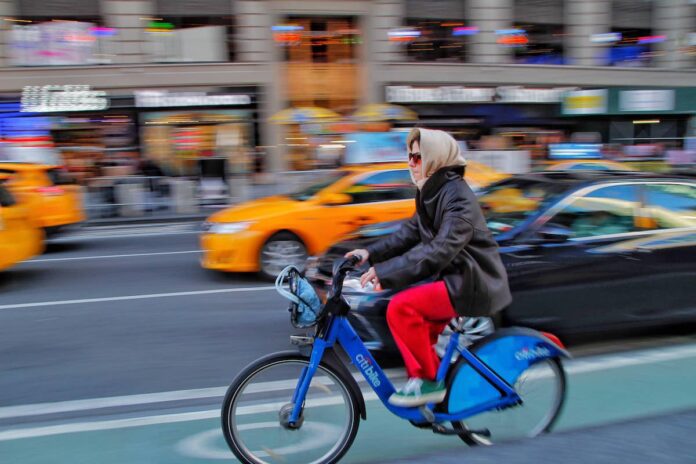In 2021, the New York Department of Transportation estimated that there were an estimated 550,000 cycling trips per day and approximately 200.8 million trips that year. These numbers, which have more than doubled in the past ten years, indicate a seismic shift in how New Yorkers get around town. Especially since the onset of the COVID-19 pandemic, commuters have turned to the transportation alternative, increasingly favoring a bike ride over a trip underground or stuck in gridlock traffic on surface streets. It’s not surprising, as city cycling boasts a wealth of benefits: it’s healthy, good for the environment, and can offer riders both freedom and safety on their journey.
Unfortunately, the freedom and safety of riders is contingent on proper city planning, designated bike lanes, and personal precautions. In a city like New York, where cars rule the road, this is not always the case. As of 2020, New York boasted over 1,375 lane-miles of bike infrastructure, but only 545 were protected. This discrepancy in designated bike lanes, which exist to keep riders and pedestrians safe, brings to light several issues in NYC. Most concerning is the human toll: in 2021, the Department of Transportation reported 4,949 cyclist injuries and 19 fatalities.
As New York becomes more and more of a cycle city, how will the streets – and the residents – adapt?
Bike Lanes in NYC
In November 2022, the NYC DOT announced major plans to expand bike lanes and public spaces in 2023. As part of the city’s effort to make the largest bike network in the US, the expansion includes adding a one-way protected bike lane on 10th Avenue between W 14th Street and W 52nd Street and improving bicycle and pedestrian access between Manhattan and the Bronx on the Washington Bridge. With an eye toward creating protected bike lanes with “high ridership, a history of vehicle non-compliance and/or lanes adjacent to heavy vehicle corridor,” other projects include protected bike lanes on Westchester Avenue (Bronx), Berry Street (Brooklyn), Ashland/Navy/Hanson (Brooklyn), and adding a two-way protected bike boulevard on Broadway between Madison Square and Herald Square.
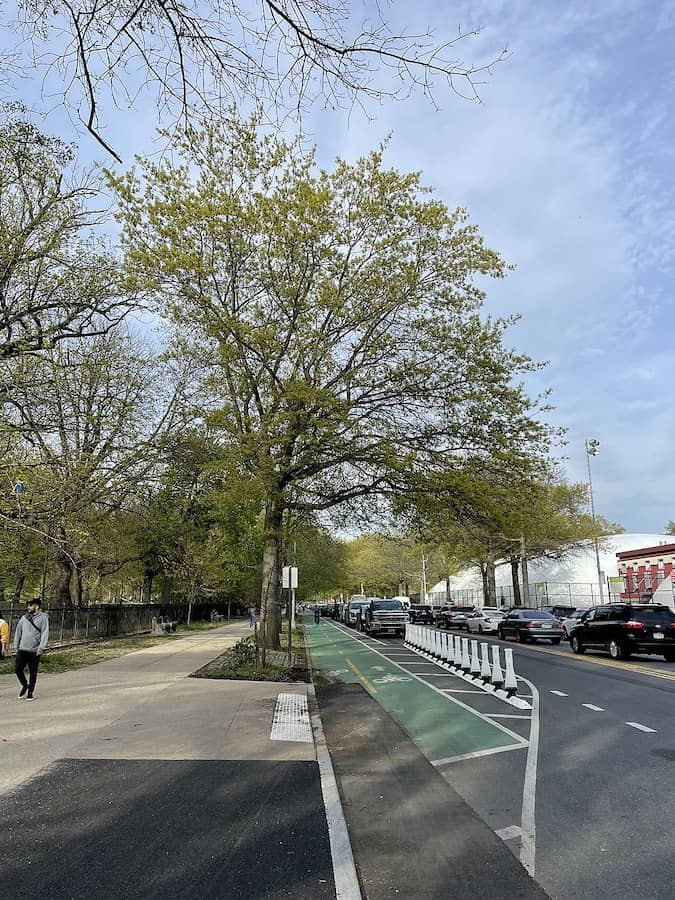
Essentially sidewalks for bikes, and protected bike lanes use some kind of physical delineator – planters, plastic bollards, parked cars, curbs – to keep a rider safe. Though a good step, these basic barriers don’t always do the trick; a plastic bollard is often not enough to deter a car from blocking the bike lane, which can lead to accidents, injuries, and fatalities. To combat this, the DOT plans to replace half of the “protected bike lanes” with Jersey barriers (fortified cement blocks weighing four tons each) by the end of 2023.
In September 2022, a second rider-centric solution was introduced: a proposed “lane blocking bill.” If passed, the bill would allow citizens to “submit a photo of a blocked bike lane to the Department of Transportation (DOT). After an investigation and subsequent ticketing, the submitter could receive 25% of the ticket value—which is expected to be $175.” Modeled after the Citizens Air Complaint program, which encourages civilians to submit photos of idling trucks and cars in exchange for 25% of the resulting ticket, the lane-blocking bill has the potential to engage citizens and make the city safer for cyclists.
How Bike-Friendly Is NYC Compared To Other U.S. Cities?
In September 2022, Anytime Estimate came out with a ranking of the most bike-friendly cities in the U.S. The ranking analyzed data from “the U.S. Census Bureau, U.S. Department of Transportation, U.S. National Centers for Environmental Information, Walk Score, Rails-to-Trails Conservancy, Vision Zero Network, Google Trends, and Yelp.” Though New York made it into the top 15, it didn’t break the top 10, and for a city itching to build the largest bike network in the U.S., it means that there is much more work to do.
New York was outranked by ten major cities, including Portland, San Francisco, Boston, Washington DC, and Minneapolis.
Based on data by Anytime Estimate
Hopefully, the aforementioned infrastructure projects and a more cyclist-centric community will continue to move up New York’s ranking. There is, however, one larger roadblock: traffic laws and practices. In their 2022 Bike Friendly States survey, the League of Bike Activists gave New York an “F” rating, mostly due to failings in the state’s legislature. As of spring 2022, the state had not passed any items on the “livable streets wish list,” a collection of potentially life-saving bills and laws compiled by the cyclist advocacy group Transportation Alternatives. These items include allowing New York City to set its own speed limits or running enforcement cameras 24-7.
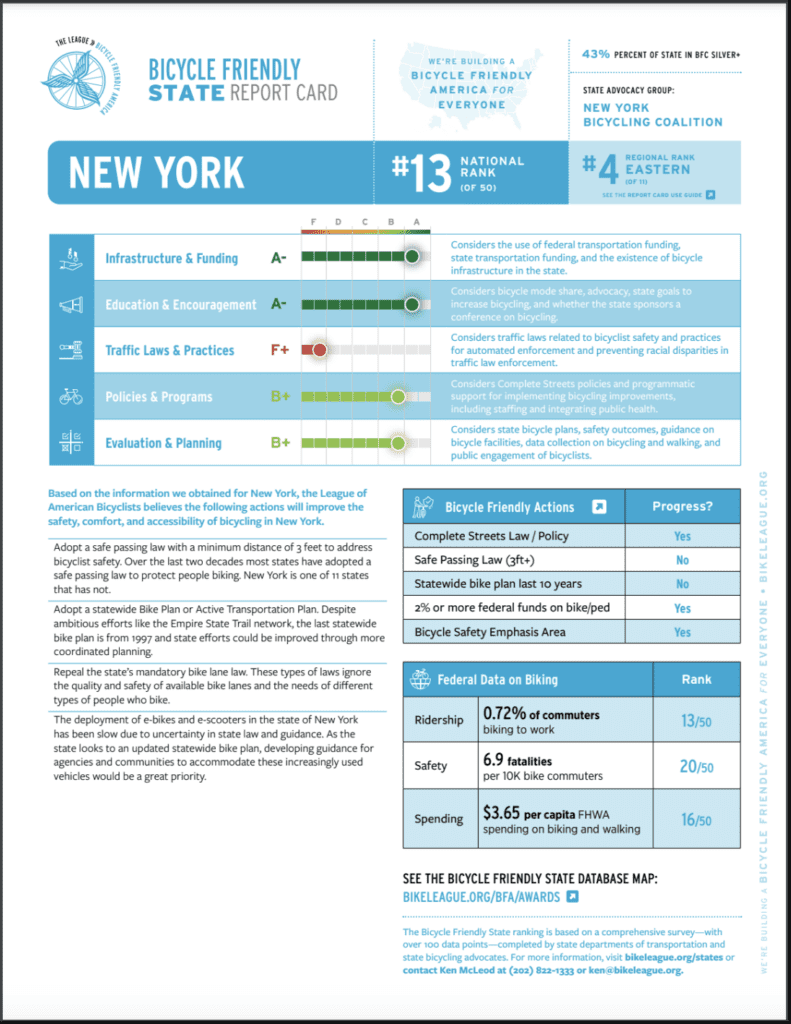
But it’s not the end of the battle. Just this month, Transportation Alternatives unveiled their new platform aimed at addressing the legal failings affecting cyclists and pedestrians. This agenda includes the SAFE Streets Act, a package of life-saving bills intended to curb speeding, champion safe street redesign, and offer support to those impacted by crashes. Submitted to Governor Kathy Hochul and New York State Legislature, advocates urged urgent action if the state hopes to meet “the critical goals of its own multimodal transportation agenda by 2030.”
The Current State of Cycling in NYC
In addition to legal and structural hurdles, there is another major pain point affecting cyclists in New York: access. In 2017, the DOT completed a study identifying the 10 districts with the highest cyclist severely killed or injured (KSI) data. The neighborhoods – seven in Brooklyn and three in Queens – were severely underserved by the DOT, with high ridership but few dedicated bicycle facilities. In an effort to make cycling safer, the agency has prioritized those areas for bicycle network expansion. A review of the projects announced and completed in recent years indicates the DOT is working to stay true to their word. Some notable ones include safety improvements on Flatbush Avenue between Grand Army Plaza and Empire Blvd (Brooklyn), greenway connections in Jamaica Bay (Queens), and an extensive bike network plan for Flushing, Queens.
Furthermore, in August 2022, Mayor Eric Adams announced that the city would be “targeting areas with a lack of good transportation and jobs for an expansion of the city’s greenway network, using $7.25 million in federal infrastructure funding to plan for the new bike paths.” Though the funding only covers planning and study, the hope is that the proposal – expected to be released in 2024 – would pave the way for potential new greenway sections including an “extension of Brooklyn’s Eastern Parkway into Brownsville, the Jamaica Bay Greenway into southeast Queens, along the Harlem River in the Bronx, and Staten Island’s North Shore.”
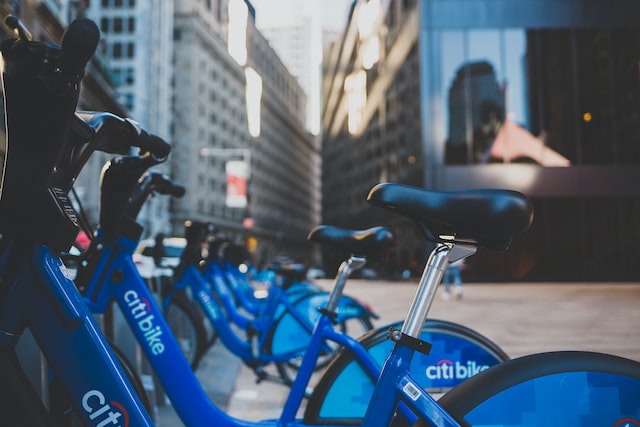
Citi Bike – the official bike-sharing system for New York – is crucial for both expansion and adoption of cycling in the city, especially in underserved neighborhoods. The massively popular program has continued to increase its presence and popularity throughout the five boroughs since launching in May 2013. Despite the roll-out, however, it has not been without issues. In 2019 a report from New York Communities for Change found that “more than 75 percent of neighborhoods that experience extreme poverty lie outside Citi Bike’s service area, and only 16.5 percent of people of color have access to any of the city’s bike sharing services.”
Though privately owned, Citi Bike is contracted by the city, and works with NYCDOT to plan its service areas. As New York works toward transportation equity, ensuring not only designated bike lanes but also access to bike stations (by way of Citi Bike) is crucial.
Since 2019, Citi Bike has shown marked improvement in its service areas. As of December 2022, Citi Bike (now owned by Lyft) had 30,000 bikes with plans to reach 40,000 by the end of 2024 — expanding to underserved neighborhoods in the Bronx, Queens and Brooklyn. Hopefully, this is only the beginning. Clearly the demand is there: on September 8th, 2022, 138,372 [Citi Bike] rides were taken, a new daily record.
Where to Bike in NYC
For the eager cyclist ready to hop on a bike and get pedaling, the NY Department of Transportation releases a yearly bike map with updated routes and paths.
It’s not a perfect system, but as the network of bike lanes continues to improve and expand, it only makes commuting through the city via cycle more enticing. And it’s not just the city – the Hudson River Greenway, for example, stretches all the way from Battery Park in Manhattan up to Whitehall in Washington County.
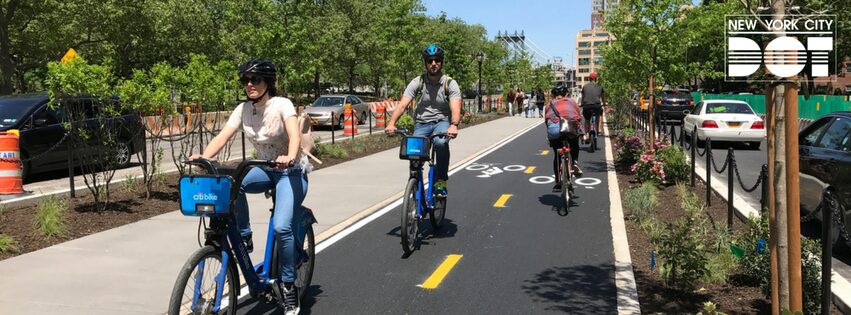
A ride across the Brooklyn Bridge offers bikers a particularly spectacular view of either Manhattan or Brooklyn, depending on the direction. For tourists, it’s a great way to get to know the city. For commuters, it’s an easy – albeit physically taxing – method of getting to work.
One can only dream of what the New York City bike network will look like in five years. If the city continues to put its money where its mouth is, hopefully it’ll be a sprawling, interconnected system of protected bike lanes that safely co-exist amongst pedestrians and cars, reaching from the depths of Brooklyn to the tip of the Bronx.
Emily Bice is a New York based writer born in Michigan, but with family in Canada - so on paper she’s the nicest person you’ll ever meet. Emily graduated from The University of Michigan’s School of Music, Theatre, and Dance. She has worked as an olive oil farmer, press correspondent at Cannes, and in television, but her favorite job is writer. Playwriting credits include before the flood (The Chain Theatre, NYC), Purgatory (developmental workshop, Ann Arbor, MI), See You In A Few (one act, the thing theatre company, Zoom). Check out more of her work at emilyabice.com!


